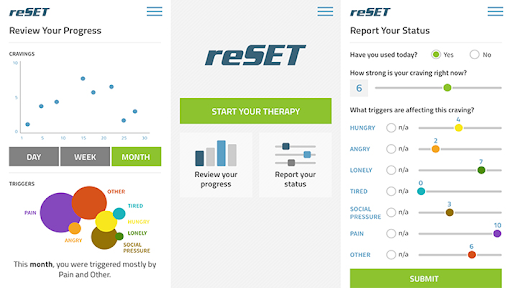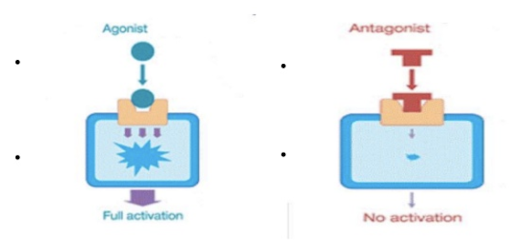Sick? Get a prescription and take some medicine. When it comes to treating medical conditions, this has been the prevailing sentiment; prescription containers and drug tablets are almost synonymous with healthcare. Technologies, such as computer softwares, have been value-added supplements to the drug—never the primary treatment [1].
However, this view might change soon. Over the past few years, researchers at the intersection of healthcare and technology have made significant advances, launching a new category of treatments called digital therapeutics and propelling it into the limelight. Fundamentally, a digital therapeutic is a software-driven and evidence-based product which prevents, manages, or treats a medical condition [2].
In late 2018, a digital therapeutic was cleared by the Food and Drug Administration (FDA) for the first time [3], which means that the FDA has reviewed it and allowed it to enter the market. That product was reSET, an app which provides cognitive behavioural therapy for substance use disorder [4].

Image courtesy of Fierce Biotech
reSET was developed by the joint efforts of Pear Therapeutics, a leader in the digital therapeutic industry, and Sandoz, a division of the Swiss pharmaceutical giant Novartis [5]. reSET is an app which provides those struggling with substance use disorders with interactive therapy sessions. It draws on the principles of cognitive behavioural therapy (CBT), a form of therapy traditionally given only by licensed therapists [6].
Despite advances such as reSET, a future where digital therapeutics completely replace drugs may still be science fiction. reSET-O, a product similar to reSET to specifically treat opioid use disorder, cannot be used standalone, and should be used only in conjunction with the existing opioid addiction medication buprenorphine [7].
Opioid medications—and opioids too—are all made of molecules that can be classified as either agonists or antagonists. In the brain, there are receptors for molecules; both agonists and antagonists target specific receptors and bind to them. When an agonist binds to their targeted receptor, it will produce some sort of response; when an antagonist binds to their receptor, it doesn’t produce any response but blocks other molecules from binding onto them. There are also partial agonists. When partial agonists bind to their receptor, it activates a response that’s smaller than the response a regular agonist would have activated [8].

Courtesy of Raghu Solanki on SlideShare
Opioids are agonists, and when they bind to opioid receptors, they activate a pleasurable response in the brain that’s also addictive. Opioid medications like buprenorphine in particular help a patient overcome their addiction by being both a partial agonist and an antagonist to these same opioid receptors. As a partial agonist, buprenorphine binds to opioid receptors, activating a diminished response compared to real opioids. As an antagonist, buprenorphine binds to opioid receptors, activating no addictive response. In both situations, having buprenorphine in a patient’s system prevents real opioid molecules from binding to opioid receptors [9].
Ultimately, buprenorphine can mitigate withdrawal symptoms of opioid use disorder patients by “reduc[ing] cravings and drug-seeking behaviors” [10].
Because digital therapeutics like reSET-O are based in software and not physical mechanisms of action, they cannot hit these biological targets, while traditional medications such as buprenorphine can. This is why many digital therapeutics like reSET-O cannot be used standalone to treat conditions.
However, even though the reality is that the current fledgling digital therapeutic industry cannot completely replace traditional medications, digital therapeutics can still add value. For instance, reSET-O comes at a time where—despite the U.S. being in the midst of an opioid crisis—most patients do not receive or seek out care for opioid abuse [11]. This is where digital therapeutics like reSET-O can add value: helping fill the treatment gap by allowing more patients to access affordable therapy.
References:
- Hale, Conor. “Pear Therapeutics’ ReSET-O Prescription App.” FierceBiotech, May 21, 2019.
- Makin, Simon. “The Emerging World of Digital Therapeutics.” Nature 573, no. 7775 (September 25, 2019): S106–9.
- Haluck, Nick. “Who’s Really First in FDA Cleared Digital Therapeutics?” Health Advances Blog, November 13, 2017.
- Lovett, Laura. “Pear’s Digital Therapeutic ReSET-O FDA Cleared to Treat Opioid Use Disorder.” MobiHealthNews, December 10, 2018.
- Hale, Conor. “Pear Therapeutics’ ReSET-O Prescription App.” FierceBiotech, May 21, 2019.
- Miller, Leah. “Types of Therapy Used in Treatment.” American Addiction Centers, October 28, 2019.
- Kern, Audrey. “Potential of Prescription Digital Therapeutics in Individuals with a History of Incarceration.” September 2019. forumoncriminaljustice.org/wp-content/uploads/2019/09/Audrey-Kern-technology-to-assist-in-reentry.pdf.
- Pleuvry, Barbara J. “Receptors, Agonists and Antagonists.” Anaesthesia & Intensive Care Medicine, Neurosurgical Anaesthesia and Intensive Care, Pharmacology, 5, no. 10 (October 1, 2004): 350–52.
- DrugBank CA. “Buprenorphine (DB00921).” Accessed July 7, 2020.
- Hale, Conor. “Pear Therapeutics’ ReSET-O Prescription App.” FierceBiotech, May 21, 2019.
